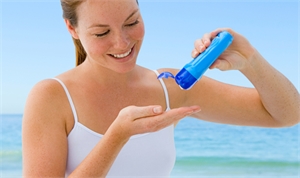
Regular application of a broad-spectrum sunscreen protects the skin from the damaging effects of ultraviolet light exposure. This reduces your risk of premature aging of the skin and skin cancer. For outdoor activity, it’s best to use sunscreen with an SPF of 30 or greater.
Here are the facts on sunscreens:
- The FDA regulates sunscreens. The ingredients in sunscreens must be shown to be safe and effective before being approved.
- Concerns have been raised about several ingredients found in certain sunscreens:
- Oxybenzone: Protects skin from harmful UVA and UVB rays. Approved in 1978 by the FDA. No data shows it causes hormonal abnormalities or any significant health problem in humans.
- Retinyl Palmitate: Protects skin from premature aging. Naturally found in our skin. There is no evidence it increases the risk of skin cancer in humans.
- Nanotechnology: Prevents active sunscreen ingredients from leaving a white residue on the skin. This leads to better coverage and improved protection from UV radiation. Nanoparticles do not enter the body through healthy or sunburned skin.
- In addition to the application of a broad-spectrum sunscreen, wearing UV-rated clothing, hats, and sunglasses are additional worthwhile protective measures. Finally, limiting mid-day outdoor activities (between 10 am and 4 pm in spring and summer) also reduces UV exposure.
Adopted from the American Academy of Dermatology web page, “Is Sunscreen Safe?”.


